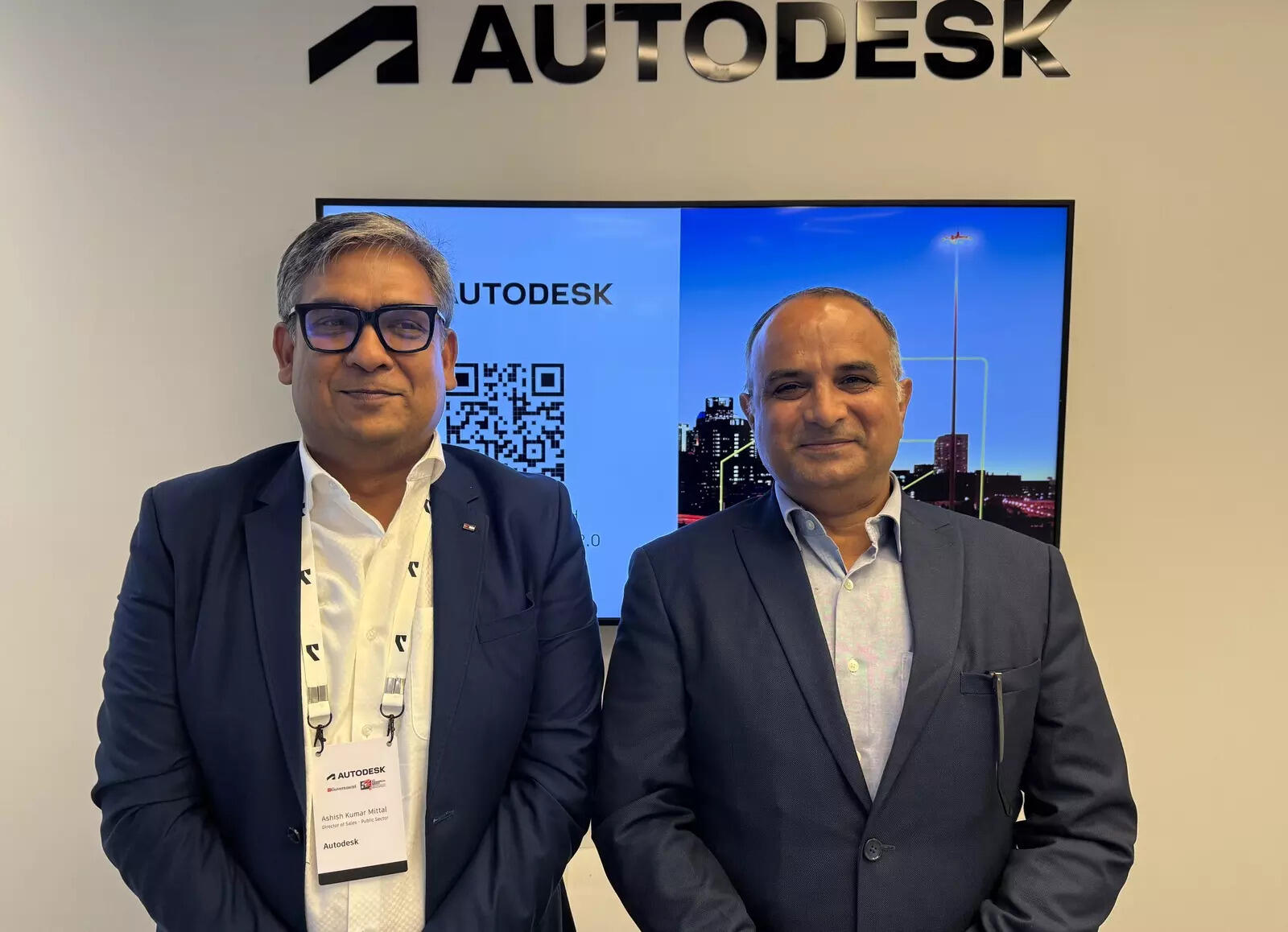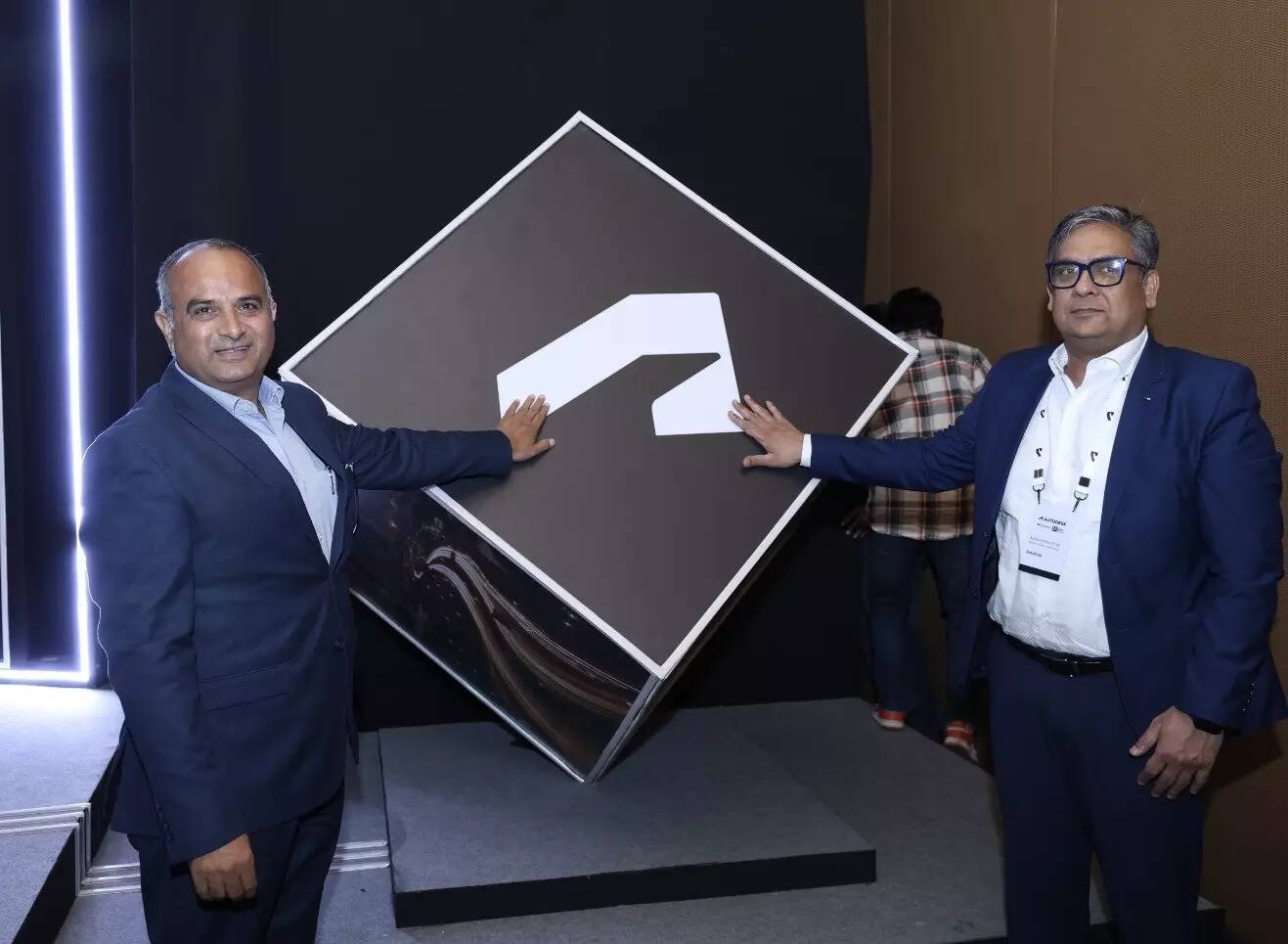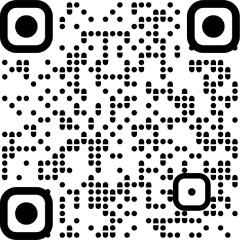
As India advances toward the ambitious Viksit Bharat 2047 vision, the integration of technology into infrastructure, manufacturing, and sustainability has become a national imperative.
From high-speed transit systems and resilient urban housing to digitally enabled public services, the demand for intelligent, future-ready infrastructure is reshaping how the nation builds and operates. At the heart of this transformation are platforms that unify design, engineering, construction, and manufacturing—driving efficiency, innovation, and long-term value.
In this exclusive conversation with Anoop Verma, Editor-News, ETGovernment, Alok Sharma, Director – AEC (India and SAARC), and Ashish Kumar Mittal, Director of Sales – Public Sector, at Autodesk, discuss how India is emerging as a global hub for infrastructure design and digital construction.
They share insights on Autodesk’s strategic investments in India, the growing adoption of BIM and AI-driven workflows, and the company’s commitment to skilling, localisation, and policy alignment. Together, they offer a compelling vision of how integrated design and make technologies are powering India’s journey to becoming a developed nation by 2047.
Edited Excerpts:
India’s Viksit Bharat 2047 vision aims to build world-class, inclusive, and sustainable infrastructure. How does Autodesk see itself contributing to this national mission?
At Autodesk, we strongly believe that a better world can be designed and made. Our mission is to empower creators across the globe to imagine and make anything. Infrastructure is central to the Viksit Bharat vision—roads, metros, housing, power—and with nearly 70% of India’s future infrastructure yet to be built, the scale and urgency are enormous. Technology plays a vital role in enabling this transformation, and Autodesk contributes through our integrated design and make platforms, particularly BIM, which brings together tools, people, and workflows. We help ensure that infrastructure projects are delivered on time, within budget, and are sustainable over decades.India is a strategic growth market for Autodesk. What kind of investments have you made here in recent years?
Autodesk has doubled down on India over the last few years. We’ve significantly increased our headcount, built up our R&D and engineering capacity, and made long-term commitments to workforce development and public-private partnerships. Importantly, this isn’t just support work—our engineers in Bengaluru are contributing directly to global product innovation, especially in AI and cloud-based workflows. These investments reflect our confidence in India, not just as a market, but as a global innovation hub.
What has been your experience of working with the Indian government, particularly as much of the infrastructure push is being driven by public sector bodies?
Our engagement with government entities has been very positive. We’ve been closely working with both central and state governments to drive the adoption of digital technologies in infrastructure projects. For instance, CPWD now mandates BIM for projects over ₹25 crore. States like Uttar Pradesh and Madhya Pradesh have also issued BIM mandates. Today, we no longer chase officials for meetings—government departments are proactively reaching out to us, requesting presentations and demonstrations. The culture is shifting towards openness to innovation.
Autodesk is uniquely positioned as the world’s only integrated Design and Make platform. How does this benefit India’s infrastructure and manufacturing sectors?
What sets us apart is our ability to offer an end-to-end solution—from concept and design to execution, manufacturing, and operations. Whether it’s a metro system or a manufacturing line for EV components, our tools allow seamless integration across disciplines. For example, a building’s architectural design, its HVAC systems, the furniture and fixtures—all of it can be planned and coordinated on Autodesk platforms. We even support the “operate” phase, enabling digital twin-based maintenance. Our open platform also integrates easily with other technologies, ensuring interoperability and scalability.
How is Autodesk supporting India’s transition from traditional CAD tools to modern, cloud-based BIM workflows?

One of the biggest challenges in infrastructure is that what’s designed is often not what gets built—and what gets built is not maintained as designed. Autodesk solves this through a Common Data Environment (CDE), where all stakeholders—from architects and EPC contractors to maintenance teams—work on a single, centralized dataset. Our Construction Cloud ensures real-time collaboration, fewer errors, and more efficient project execution.
How is Autodesk aligning with major Indian policy initiatives such as Gati Shakti, the National Infrastructure Pipeline, and Digital India?
We have a dedicated government affairs team in India that works closely with policy makers. We’ve adapted our products to meet local compliance requirements under Make in India. Our collaborations include training thousands of CPWD-empaneled contractors and developing 400+ hours of learning content, now available in Hindi on the iGOT Karmayogi platform. We also support policy frameworks for BIM adoption and have contributed to standards under Smart Cities, NIP, and Gati Shakti.
India’s young workforce is a major asset. How is Autodesk helping nurture future-ready talent in design and engineering?
Talent development is one of Autodesk’s four strategic pillars. A decade ago, we made our entire software suite freely available to students and institutions. We’ve since built active academic partnerships with IITs, NITs, and ITIs, and are now working closely with industry leaders like Tata Projects to ensure real-world relevance. We are also investing in vocational training, localized content, and public sector upskilling initiatives. For example, in just the first two weeks of making our training modules available on iGOT in Hindi, over 7,500 government officials enrolled.
With Make in India and Industry 4.0 gaining traction, how is Autodesk supporting manufacturers in becoming more agile and globally competitive?
Autodesk plays a key role in digital prototyping, simulation, and AI-based manufacturing. For example, we’ve partnered with IMP to design India’s first solar-powered e-rickshaw and with Mahindra on their EV line. We also work with government-linked PSUs engaged in manufacturing. Our design and make tools are helping Indian manufacturers innovate faster, reduce costs, and improve product quality—contributing directly to the “Make in India, Make for the World” vision.
We’re hearing a lot about ‘Design in India’ now. Can you share how India is becoming a global hub for infrastructure design?
Prime Minister Modi has recently emphasized “Create in India” and “Design in India”—and we’re already seeing this happen in infrastructure. Take the Lusail Stadium, where the 2022 FIFA World Cup final was held. It was designed by a firm called Pinnacle Infotech, which is headquartered in Durgapur and has offices in Jaipur. This is not an isolated example—many global infrastructure projects are now being designed by Indian engineers. India is fast becoming the world’s design office, and Autodesk is enabling that transition through our platforms and partnerships.
We are having this conversation on the sidelines of the Viksit Bharat Summit, where Autodesk has launched a new India-focused Building Information Modelling (BIM) suite—‘BIM Package for Viksit Bharat’. How does this launch reflect Autodesk’s broader contribution to India’s long-term development goals?
The BIM Package for Viksit Bharat is a milestone initiative tailored specifically for India’s infrastructure journey. It includes countrified toolsets for Autodesk Revit and Civil 3D, aligned with local codes such as the Delhi Schedule of Rates (DSR), Indian Road Congress (IRC), MoRTH, and Indian Railways standards. These contextual enhancements make it significantly easier for architects, engineers, and consultants to design, collaborate, and deliver infrastructure that meets India’s specific regulatory and operational needs.
BIM in this context is not just a design tool—it becomes a foundational digital layer that underpins infrastructure delivery. By addressing long standing adoption challenges—such as the lack of locally relevant components and workflows—we’re simplifying BIM deployment across the ecosystem. This initiative exemplifies our commitment to three core areas: making advanced global technologies accessible in India, localizing them to meet domestic standards, and building capacity across academia, industry, and government. These are our key pillars in supporting the Viksit Bharat vision.
The BIM Package for Viksit Bharat has been described as a ready-to-deploy solution for Indian architects, engineers, and policymakers. How does this solution meet the rising expectations for smarter, faster, and more sustainable infrastructure?
India’s infrastructure ambitions are among the most ambitious in the world—ranging from industrial corridors and urban transit to affordable housing and smart cities. In such a high-pressure environment, precision, speed, and sustainability are non-negotiable. The BIM Package directly supports these objectives by offering intelligent automation, integrated collaboration, and compliance with Indian standards—all out of the box.
For instance, Revit now includes pre-loaded templates that conform to the latest DSR, which streamlines building design and reduces rework. Civil 3D’s integration with IRC, MoRTH, and IRS standards enables engineers to accelerate road and rail projects with far greater accuracy and much less manual effort. Combined with AI-enabled tools and cloud-based workflows, this package empowers professionals to reduce waste, avoid costly errors, and deliver infrastructure that is not just robust but also environmentally responsible. It’s a direct enabler of the speed and quality that Viksit Bharat demands.
India is a high-growth market. What kind of outlook does Autodesk have for India in the coming years?
What’s clear is that India is no longer just a support hub—it’s a core innovation engine for Autodesk. India is now Autodesk’s second-largest employee base globally after the US. Our headcount in India has doubled in the last five years. The scale and momentum of our investments indicate a strong and growing commitment. The very fact that Autodesk is scaling up in India is proof of the strategic importance we place on this market.


